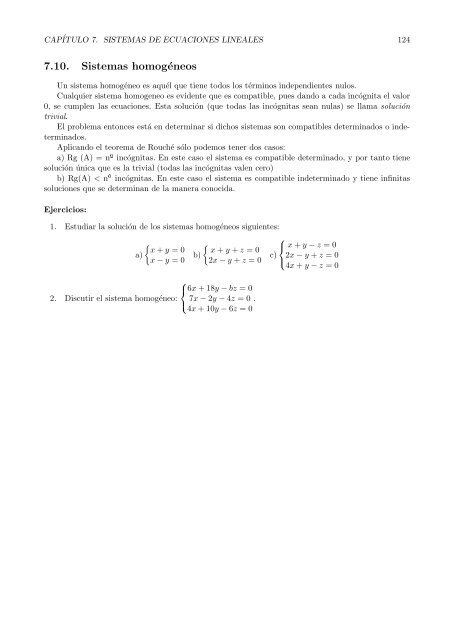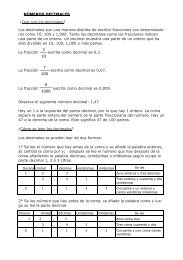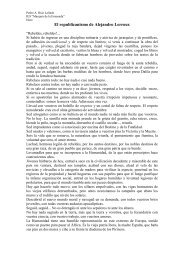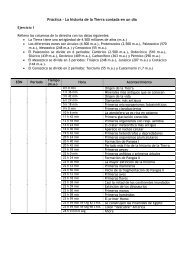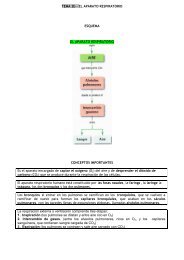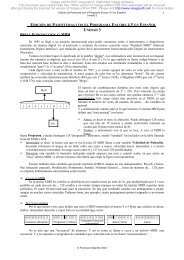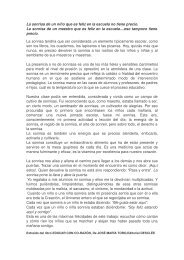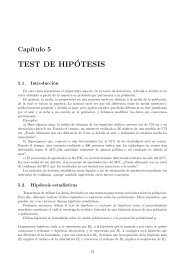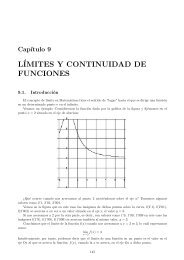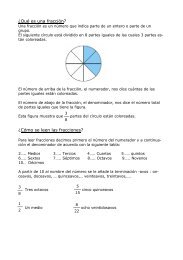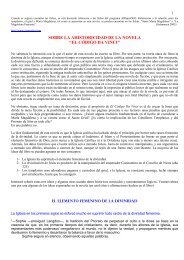SISTEMAS DE ECUACIONES LINEALES
SISTEMAS DE ECUACIONES LINEALES
SISTEMAS DE ECUACIONES LINEALES
Create successful ePaper yourself
Turn your PDF publications into a flip-book with our unique Google optimized e-Paper software.
CAPÍTULO 7. <strong>SISTEMAS</strong> <strong>DE</strong> <strong>ECUACIONES</strong> <strong>LINEALES</strong> 124<br />
7.10. Sistemas homogéneos<br />
Un sistema homogéneo es aquél que tiene todos los términos independientes nulos.<br />
Cualquier sistema homogeneo es evidente que es compatible, pues dando a cada incógnita el valor<br />
0, se cumplen las ecuaciones. Esta solución (que todas las incógnitas sean nulas) se llama solución<br />
trivial.<br />
El problema entonces está en determinar si dichos sistemas son compatibles determinados o indeterminados.<br />
Aplicando el teorema de Rouché sólo podemos tener dos casos:<br />
a) Rg (A) = nö incógnitas. En este caso el sistema es compatible determinado, y por tanto tiene<br />
solución única que es la trivial (todas las incógnitas valen cero)<br />
b)Rg(A)< nö incógnitas. En este caso el sistema es compatible indeterminado y tiene infinitas<br />
soluciones que se determinan de la manera conocida.<br />
Ejercicios:<br />
1. Estudiar la solución de los sistemas homogéneos siguientes:<br />
<br />
x + y =0<br />
a)<br />
x − y =0 b)<br />
<br />
x + y + z =0<br />
2x − y + z =0<br />
⎧<br />
⎨ x + y − z =0<br />
c) 2x − y + z =0<br />
⎩<br />
4x + y − z =0<br />
⎧<br />
⎨6x<br />
+18y− bz =0<br />
2. Discutir el sistema homogéneo: 7x − 2y − 4z =0.<br />
⎩<br />
4x +10y−6z =0


